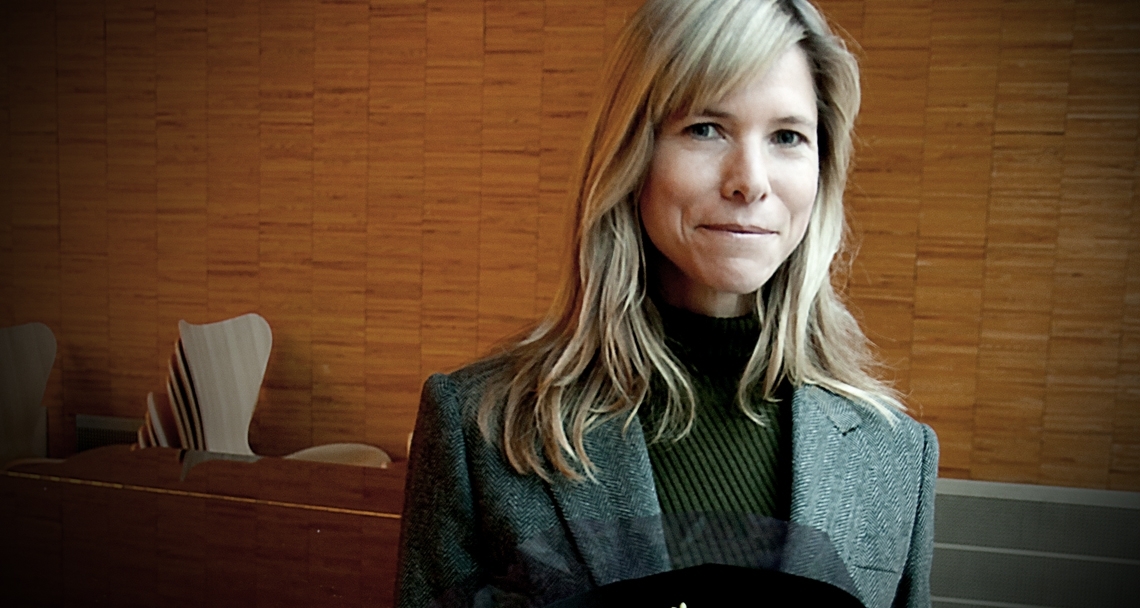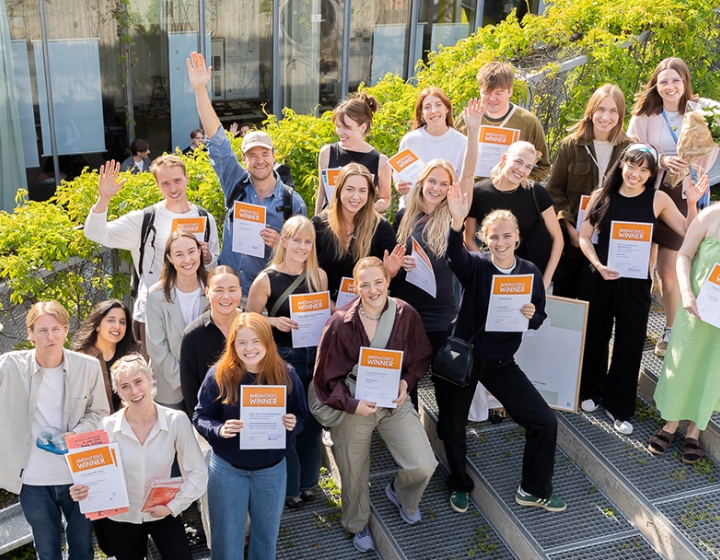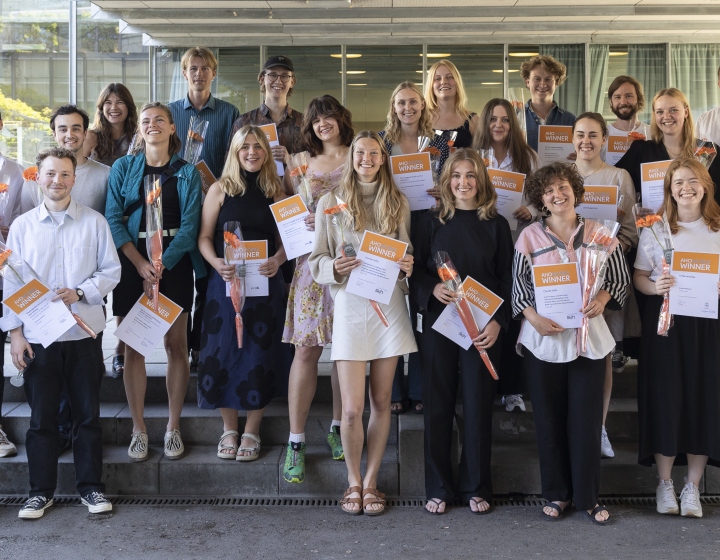What can solar cells do for design?
Or how to get people to enjoy sustainable architecture more and architects to make more sustainable architecture. An interview with PHD Nina Edwards Anker.
Nina Edwards Anker defended her PHD-thesis “Mediating sunlight: Sensing solar cells” on November 7th. 2016. In her architect and design practice, she has exhibited her solar lights and furniture widely.
What prompted your academic trajectory? Why solar cells and design?
Photosynthesis and the relation between nature and the physical world fascinate me: The combination of mind and matter. Another motif has been how the designer can ensure that global solutions and sustainable design do not come at the expense of a rich understanding of the human condition. To fight global warming people must incorporate environmental technologies such as solar panels in their every day lives. They will do so only if they are attracted to them.
How can solar designs bring people and the planet closer together?
I have chosen to focus on affectivness; Eco-ethical and economic motivation alone cannot motivate this change. The designer’s capacity to mediate sunlight through solar cells in a way that gives a multi-sensory experience could have this affect. When we feel and see the rhythms of light and shadow, we also become aware of the energy in sunlight and the sun’s powerful natural process.
And the solar cells?
Organic solar cells emulate and imitates photosynthesis. The dissertation was partly inspired by Laszlo Moholy-Nagy and his sculptures of light passing through glass. Moholy-Nagy believed in the capacity of art to express the merging of the organic and the artificial.
Light in architecture, this is not a new thematic?
Yes, it goes far back. The Pantheon, the Mayan temples, the Egyptian Pyramids made the skin of the structure mediate light in a meaningful way. Technology and art, mind and body merge in perception; it is about the experience and sensing. This is why I choose to focus on affect and affect theory.
What are the main themes in affect theory?
There are two camps: One sees affect in architecture as purely a central stimulation. The other has sense and mind come together. Effect becomes affective. Senses and design merge. I wanted to clarify how we experience design through our senses.
In modern day architecture, so many of the high performance buildings are sealed off. I ask how to make architecture that responds to a specific setting. How does architecture meet the ecological crisis? How do we balance ecology and design?
These are big questions.
Yes, and I address them through case studies. All the cases I have chosen employ photovoltaic materials. I look at products, furniture, landscapes, based on a background of phenomenological philosophy, centered on experience not analyzing. The goal is to get people to enjoy sustainable architecture more and architects to make more sustainable architecture. When sensations are allowed to function in relation to one another they carry each other forward.
This is an ethical work and agenda?
If one experiences sustainable design and understands how it relates to the sun – and to us, yes I think it will influence our choices and our consciousness of global warming.
Like the exhibition at Tate Modern, and the Biennale; Little Sun: an everyday object, the flashlight, solves issues and turns this into a piece of art.
Does this begin in esthetics or in ethics?
It begins in design. It is not if we are going to, but how we go about this. In addition, I am concerned about how not to sacrifice wellbeing for measurements and set standards. All the certifications designers must follow: How do we maintain good design and balance the demands? It is about using design or an emerging technology in design that addresses global warming from the point of view of design so that the actual experience of it becomes a priority.
This brings me to another of the concepts I investigate: Liveliness. The objects collect solar power, which lights the pieces automatically. They live their own lives, like plants directly from the sun. As Nigel Thrift has commented on the nature of certain contemporary surfaces, in their oscillation between inert objects and lively beings – their uncertain status – they may attract us by captivating our curiosity.
Like your latitude loungers?
Yes, through designing basic stuff – as my solar loungers with photovoltaic panels, where light is mirrored and lights the chairs at night. The loungers provide heating and make patterns in the darkness. They inhabit the borderline of inert objects and live beings, the organic and the technical.
What prompted your academic trajectory? Why solar cells and design?
Photosynthesis and the relation between nature and the physical world fascinate me: The combination of mind and matter. Another motif has been how the designer can ensure that global solutions and sustainable design do not come at the expense of a rich understanding of the human condition. To fight global warming people must incorporate environmental technologies such as solar panels in their every day lives. They will do so only if they are attracted to them.
How can solar designs bring people and the planet closer together?
I have chosen to focus on affectivness; Eco-ethical and economic motivation alone cannot motivate this change. The designer’s capacity to mediate sunlight through solar cells in a way that gives a multi-sensory experience could have this affect. When we feel and see the rhythms of light and shadow, we also become aware of the energy in sunlight and the sun’s powerful natural process.
And the solar cells?
Organic solar cells emulate and imitates photosynthesis. The dissertation was partly inspired by Laszlo Moholy-Nagy and his sculptures of light passing through glass. Moholy-Nagy believed in the capacity of art to express the merging of the organic and the artificial.
Light in architecture, this is not a new thematic?
Yes, it goes far back. The Pantheon, the Mayan temples, the Egyptian Pyramids made the skin of the structure mediate light in a meaningful way. Technology and art, mind and body merge in perception; it is about the experience and sensing. This is why I choose to focus on affect and affect theory.
What are the main themes in affect theory?
There are two camps: One sees affect in architecture as purely a central stimulation. The other has sense and mind come together. Effect becomes affective. Senses and design merge. I wanted to clarify how we experience design through our senses.
In modern day architecture, so many of the high performance buildings are sealed off. I ask how to make architecture that responds to a specific setting. How does architecture meet the ecological crisis? How do we balance ecology and design?
These are big questions.
Yes, and I address them through case studies. All the cases I have chosen employ photovoltaic materials. I look at products, furniture, landscapes, based on a background of phenomenological philosophy, centered on experience not analyzing. The goal is to get people to enjoy sustainable architecture more and architects to make more sustainable architecture. When sensations are allowed to function in relation to one another they carry each other forward.
This is an ethical work and agenda?
If one experiences sustainable design and understands how it relates to the sun – and to us, yes I think it will influence our choices and our consciousness of global warming.
Like the exhibition at Tate Modern, and the Biennale; Little Sun: an everyday object, the flashlight, solves issues and turns this into a piece of art.
Does this begin in esthetics or in ethics?
It begins in design. It is not if we are going to, but how we go about this. In addition, I am concerned about how not to sacrifice wellbeing for measurements and set standards. All the certifications designers must follow: How do we maintain good design and balance the demands? It is about using design or an emerging technology in design that addresses global warming from the point of view of design so that the actual experience of it becomes a priority.
This brings me to another of the concepts I investigate: Liveliness. The objects collect solar power, which lights the pieces automatically. They live their own lives, like plants directly from the sun. As Nigel Thrift has commented on the nature of certain contemporary surfaces, in their oscillation between inert objects and lively beings – their uncertain status – they may attract us by captivating our curiosity.
Like your latitude loungers?
Yes, through designing basic stuff – as my solar loungers with photovoltaic panels, where light is mirrored and lights the chairs at night. The loungers provide heating and make patterns in the darkness. They inhabit the borderline of inert objects and live beings, the organic and the technical.
Nina Edwards Anker (1971) is an architect and designer. She received her Master’s degree from the Harvard Graduate School of Design (2001) after having completed two years at the Architectural Association. Edwards Anker started NEA Studio, an experimental design collaborative that integrates environmental principles into design, in Oslo in 2006. In addition to practicing architecture, she has exhibited her solar lights and furniture widely, and she won the 2015 Chicago Athenaeum Museum of Architecture and Design Award for her Landscape Sofa. Her work is currently on display at New Lab in New York’s Brooklyn Navy Yard, where she is a researcher, designer and architect.



